The content of the article
People sometimes, having caught a cold, do not really pay attention to it, still continuing to go to work and living a normal life. When the cold is badly enough, they go to the doctor or are treated independently at home. Cats are heavier in this regard, they can only hope for a strong healthy immunity, which helps in the fight against a creeping ailment. Murlyks living at home are easier to deal with colds - they are helped by the owners, who noticed the pet's malaise in time. Why does a cat catch a cold, how to identify and cure an onset disease - this will be discussed.
Causes of the common cold
Living in nature, cats rarely catch a cold (you can even say never) - the immune system is strong enough, but in apartments some circumstances undermine it.
- The room is humid and cold. If the house where the cat lives is damp and constant drafts - a cold is provided to the pet. The best temperature for life is plus 20 degrees in the summer and at least 22 degrees in the winter.
- Poor nutrition. A cat that has few vitamins in its daily diet, is not enough protein and other necessary substances, may also have reduced immunity. A high-quality, nutritious diet protects the animal from colds and other diseases.
- Hypothermia. Walking along the street, a cat can easily find itself in the rain. If the wool gets wet a little - it does not matter, but if it gets wet very much, then there is a violation of thermoregulation, while the animal freezes very quickly. Especially when it comes around. And sometimes it happens - the owner redeems the cat, does not dry the hair well - and it freezes and freezes.
- Secretive disease. It is also quite possible that the animal suffers from some other disease that does not exhibit visible symptoms. Feline immunity struggles with this invisible sore, not noticing a cold.
Symptoms
The manifestations of disease in cats are the same as in humans. A cat cold has almost identical symptoms. With a cold disease, a fluffy pet does not tirelessly rush around the house all day - it gets tired very quickly, constantly sleeps, shyness and aggression of the animal increase.
- Snot. With colds, snot is a normal thing. Through this mucus, the body is cleansed of dead microorganisms. When a cat runs cold, it is usually difficult to breathe with one nose, so it slightly opens its mouth. Seeing that the animal breathes only through the mouth, one should be wary - a bad symptom. Discharge from the nose should be transparent and not viscous. If their color has changed, pus has appeared - then this is no longer a cold. An urgent need to run to the veterinarian!
- Coughing alternating with sneezing. Sneezing and coughing, earning a cold is a common thing, the body is cleansed of unnecessary accumulated secretions. A sneezing but washing cat is normal, but if the muzzle is groomed and dirty, then the disease becomes worse.
- Lacrimation. With a cold, the nasal mucosa is irritated, so profuse or not very lacrimation can occur.
- Missing or decreased appetite. With a cold, a cat may lose its appetite for a long time and not approach a bowl of food. However, due to fever and dehydration, he can drink a lot and constantly. Do not force the cat to eat - she herself knows what and when she needs to do. The only thing you can give lean meat broth. If she does not have more than 32-34 hours - this is an occasion to phone and consult with a veterinarian. After listening to the visible symptoms, he will decide what to do next.
- Redness of the mucous membrane. This symptom may not be observed, especially in outbred cats. Often, redness of the mucous membrane of the eyelids indicates high blood pressure.
- Fever. If the constant human temperature rises, it means that he is sick. You can’t say the same about cats - their temperature during the day changes by one and a half degrees - depends on the size. Therefore, an increase in temperature can not be called a symptom. Only if it is combined with other signs.
Having noticed at least one symptom, the owner should carefully monitor the condition and behavior of the pet. If there is an opportunity to immediately go to the veterinary clinic - it is better to use it immediately. Indeed, with an early diagnosis of the disease, it is easier to cure.
Home treatment
If your pet has all of the above cold syndromes, you can try to treat the cat at home. Especially if it happens in the warm season and there is confidence that the cat has gotten cold from hypothermia, draft or other natural causes, and did not catch the infection from another cat. Indeed, in the summer, spring and autumn it is not. So what to do.
- Peace and warmth. As a rule, cats decide on their own which place is convenient for them and fit there. The owner only needs to be given to ensure normal temperature and peace.
- Drink. Be sure to provide your pet with plenty of drink. The best option would be warm milk. Although the animal has no appetite, it is advisable to make sure that he always has access to food.
- Massage and heating pads. In order for the cat to recover faster, blood circulation and metabolism can be improved with the help of an ordinary massage. Or you can just stroke it as often as possible. And if the pet freezes, then it is recommended to surround it with heating pad with warm water. Or heating pads.
Such treatment at home is acceptable when a cat has a runny nose and profuse tears. She needs to be helped to clear the airways of secretions, the following is done:
- A sponge is made from cotton wool and with its help the eyes and nose are cleaned of all kinds of secretions. It is better to moisten the sponge in water, you should not use herbal decoctions - suddenly the pet is allergic.
- Need to rinse your nose. The following options are used for this: adrenaline with novocaine, tannin, ethacridine, zinc sulfate.
- A mixture of methanol and fish oil is instilled into the nose.
- It is possible, despite the fierce resistance of the cat, to pour crushed streptocide into the nose.
It is worth noting that cats should be treated exclusively with special cat medications - human medicines are not suitable for this. Moreover, many of them are dangerous for animals. There is no way to go to the clinic - you can call there, but consultation with a specialist is required.
Cold Prevention
- Cats surrounded by care and attention are much less likely to get any of the common colds. A tailed pet, living in comfortable conditions and having a complete and vitamin-rich diet, has strong immunity. Here are the rules to help reduce or eliminate the risk of a cat having a cold.
- If the cat got wet (in the rain or the owner bought it), then it is necessary to wrap it in a dry towel, if possible warm it, calm it in every possible way. When drying, the animal should be in a room with a normal temperature without drafts.
- If the cat is a walker, then in winter (or during rains) limit it to walks, make them shorter. And it is better not to let go of the house at such periods.
- Many give birth to cats and do not think at all that they need to be treated from worms from time to time. Not a single cat walking on the street is safe from this parasite. Removing worms is useful as a prophylaxis of not only colds, but also other diseases.This procedure will positively affect the condition of the cat.
- And most importantly, no owner of the animal should forget about it - you should put the right vaccinations.
Dangerous diseases disguised as a common cold
Sometimes, it seems - the cat has just a runny nose, the owner believes that it is just a cold. In fact, it can turn out to be dangerous, bad diseases. If they are not correctly diagnosed, and continue to treat the pet for colds, then there is a risk of greatly worsening the condition of the cat. Here are diseases similar to the common cold:
- Rhinotracheitis - affects the nose and eyes, proceeds in an acute form, the discharge is abundant and sticky. Only cats that have had the disease have immunity.
- Inflammation of the lungs - the diagnosis can only be made after listening to the chest and radiotherapy. Mycoplasmosis and other similar infections affect the urogenital organs and mucous membranes of the nose and eyes.
- Calcivirosis is an acute disease that is transmitted infectiously. During the disease, conjunctivitis appears and ulcers form in the mouth.
If you start to treat a cold at the first sign of its occurrence, then the cat pretty quickly get rid of suffering. And timely prevention will prevent the disease from occurring again.
Video: cat colds

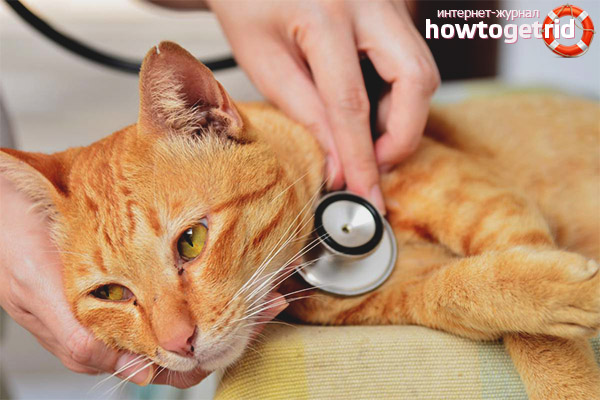
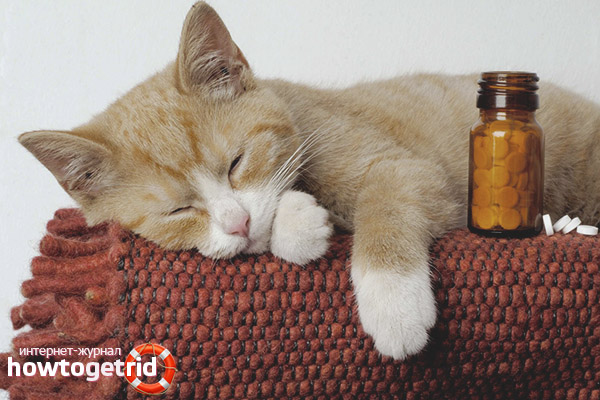
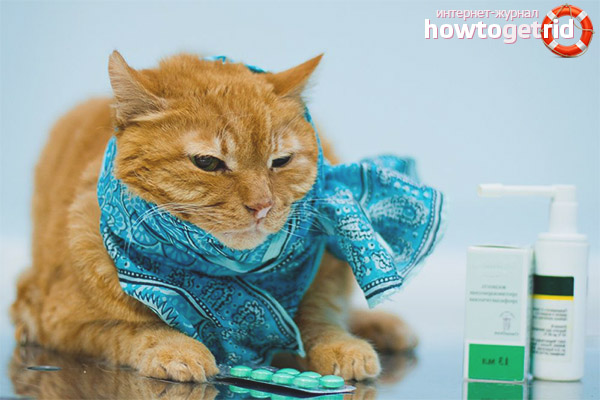



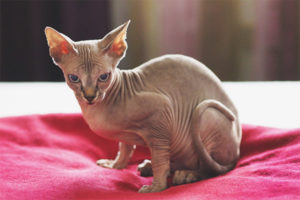
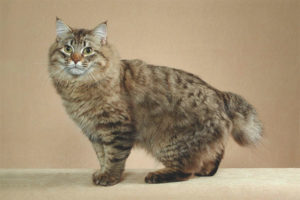
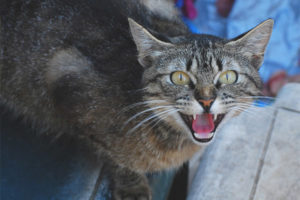
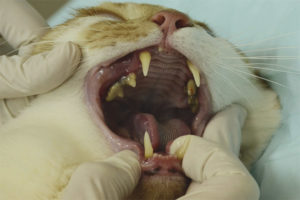

Submit